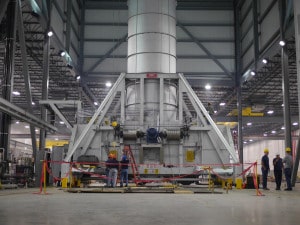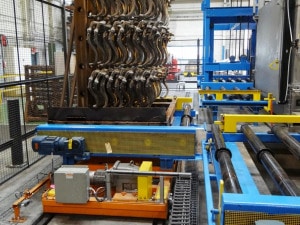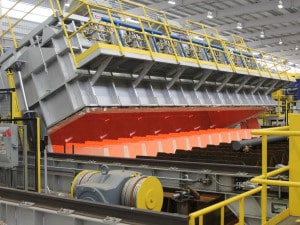Aluminum Solution
Heat Treatment
CEC is the Undisputed World Leader in Aluminum Furnaces
Decades of innovation in Aluminum solution treatment
CEC is an industry leading designer and manufacturer of aluminum solution heat treatment furnaces. We have manufactured solutionizing furnaces for all types of castings, extrusions, tubing & rolled product. For specific information about the products that you are treating, please refer to our menu or chat. This page is meant to overview our capability in aluminum solutionizing.
CEC has extensive experience in heat treating aluminum. To date, CEC’s T4 & T6 installations process more than 57 million aluminum cylinder heads, engine blocks and wheels every year. Our commitment to innovation and robust design has allowed us to manufacture some of the largest & most productive heat treatment systems in the world.
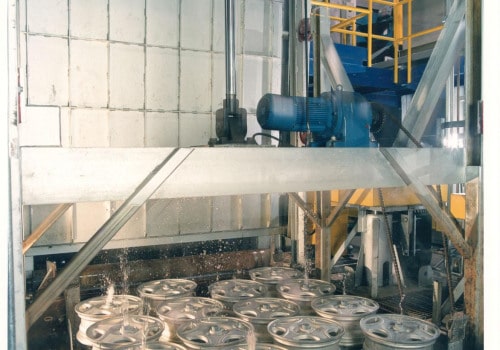
CEC has invented and developed solution heat-treatment machine innovations and processes that have produced more than 105 patents. To develop and optimize processes, we have run more than 6350 CEC sponsored or funded casting tests to prove our process innovations. Our corporate focus is to save you and the end customer operating costs and pollution while improving your product quality. CEC invented and remains the world leader in trayless and basketless head, block and wheel casting processing, among many other advancements.
With the best technology and arguably the best design team in the world, here is a short list of some of the innovations that CEC offers:
- Short Cycle Heat Treatment (Solution for less time & energy). Through extensive testing CEC works with its customers to minimize energy consumption while maintaining desired properties.
- Close Proximity Heat Treatment (Hot Castings from the Die) This patented method has revolutionized many treatment methods in the auto industry, further decreasing energy consumption while minimizing part movement and foundry footprint.
- ”3 in 1 Heat Treatment,” (Sand Removal and Sand Reclaim in one machine) One of CEC’s greatest contributions to the heat treating of sand mold castings, 3 in 1 treatment has saved most of the large auto manufacturers millions.
- Single stack energy optimization and pollution reduction (CleanCast™) Decades of perfecting CEC’s 3 in 1 technology has led to more efficient furnace designs. Cleancast™ machines represent the most efficient treatment method for large scale foundries using sand molds.
- Heat Treatment of High Pressure Die Castings (HPDC). This has already resulted in substantial savings to the customers whose castings have been processed in our machines. Call us today and we will review our technology with you privately.
- Chain, rotary or other “cell type” or “close proximity” furnaces can be located directly at the mold filling or forging output stations and will heat parts with radiation, nozzle-flow or other potential product enhancement features to ensure the shortest possible heat-treatment time and lowest cost.
Our process features give you the greatest assurance that your physical properties will be met. Call us today to tell us about your production needs. We offer engineering and testing that will show you how your casting or forging costs can be minimized and your pollution reduced. CEC systems are the proven industry benchmark. See why Mercedes, Ford, Norsk Hydro, BMW, Nemak, Teksid, Superior, VAW, and other fine casting companies put their development and engineering trust in CEC for their largest projects.
INNOVATION IN ALUMINUM SOLUTION TREATMENT
CEC invented and remains the world leader in trayless and basketless head, block and wheel casting processing.
Aluminum solution treatment overview
This section is intended as an overview of the subject and terms of Aluminum solution treatment. For more specific information about your industry, or the products that you are heat treating, please refer to our menu or send us a chat message.
Aluminum solutionizing is the process of heat treating and cooling an aluminum alloy to achieve desired properties. A heat treatable Aluminum alloy is typically comprised of between two and eleven percent other elements. These elements, which include copper, zinc, silicon, manganese, and magnesium, are added to pure aluminum to achieve superior properties. The addition of these elements in the right amounts qualifies an aluminum alloy to be heat treatable and informs the type of heat treatment recipe that is needed.
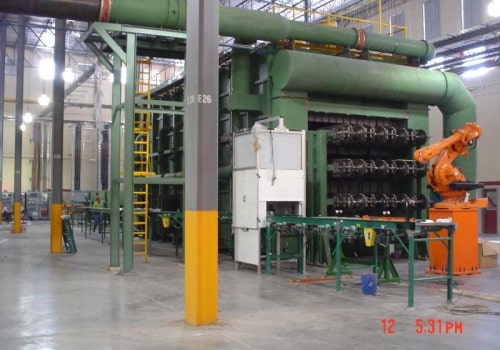
Conversation around aluminum solutionizing involves the use of two standard sets of terms to describe the product and the process. Tempers, or T’s (ie. T3, T4) as they are commonly shortened, are used to refer to the type of treatment that an aluminum alloy will undergo. Alloy designations are used to describe the alloying ingredients that have been added to Aluminum. Wrought alloys are described by a four digit system. Cast alloys are described by three. A working knowledge of these terms can be helpful in a discussion of aluminum solutionizing.
Typical wrought aluminum alloys that benefit from heat treating, designated by their primary alloying ingredient(s), are as follows: Magnesium/Zinc are designated by 7000, Copper by 2000, Magnesium/Silicon by 6000. Other numbers, like 1000 which represents pure aluminum, are not heat treatable and therefore are not included in this section. With the primary alloying constituents designated by the first number, the remaining numbers are used to further specify the alloys constituents. For example, 7050 is an aerospace alloy comprised of: 6.2% Zinc; 2.3% Magnesium; 2.3% Copper; and 0.12% Zirconium.
Cast aluminum alloys use a three digit system to designate alloy composition. The most common candidates for heat treating in this system are: 200 (with a primary alloying element of Copper) and 300 (a mixture of Silicon plus Copper &/or Magnesium). Here again, further information about the alloy is added in the remaining two numbers. In some cases an additional number may be added after a period to fully describe the part. For example, 365.0 describes a 300 series alloy with the final digit “.0” indicating that the casting is in its final shape.
With the cast or wrought alloy now properly described, the heat treater is free to describe the treatment required to complete the part. Now we come back to the ten T’s in the heat treating world. The most common temper designations in heat treating are T3, 4, 6, 7, & 8. T3 & T4 products undergo solution heat treatment, quenching, and natural aging at room temperature. T6, T7, & T8 tempers describe products that undergo solution heat treatment, quenching, and artificial aging.
When used together, the alloying designation and the temper designation of a part combine to fully describe it to the heat treater. Returning to the examples above 356-T6 describes a cast 300 series alloy that has been solution heat treated and artificially aged.
We hope that this information has been useful in your understanding of various aluminum solution treatments. You can contact a CEC sales engineer using the chat box below to discuss your production needs, or use the top menu to navigate to more specific information about your industry or product.


